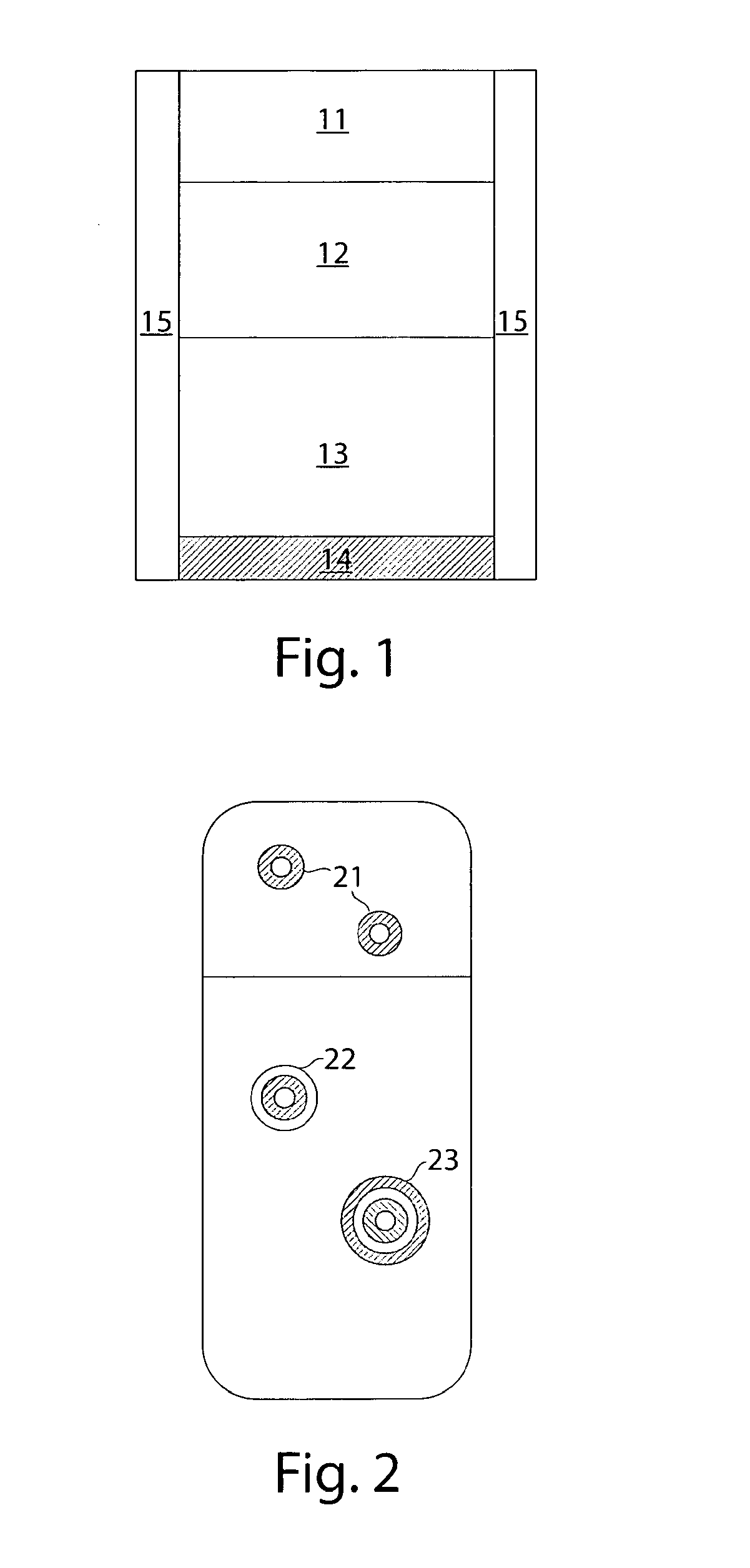Pharmaceutical compositions for treatment of parkinson's disease and related disorders
a technology for parkinson's disease and pharmaceutical compositions, applied in the direction of drug compositions, biocides, peptide/protein ingredients, etc., can solve the problems of affecting the function of the affected area, affecting the ability and distress of patients, and relative excess of acetylcholin
- Summary
- Abstract
- Description
- Claims
- Application Information
AI Technical Summary
Benefits of technology
Problems solved by technology
Method used
Image
Examples
example 1
In Vivo Release of Levodopa and Carbidopa
[1007]The following experiment was designed to determine if effective levodopa concentration in vivo is increased at the presence of a higher ratio of carbidopa to levodopa (as compared to that used in conventional therapy).
[1008]SINEMET® CR tablets (50 mg carbidopa / 200 mg levodopa) were administered to fed beagle dogs either alone or after pre-dosing with 12.5 mg and 25 mg of carbidopa, and plasma concentrations of carbidopa and levodopa were measured over time (data not shown). The AUC0-24 (Area Under the Concentration-time curve for 24 hours) for each set of measurements were also summarized in Table 1 below.
TABLE 1AUC0-24 (ng / mL × hr) of Carbidopa and LevodopaSINEMET ®Carbidopa 12.5 mg +Carbidopa 25 mg +DrugCRSINEMET ® CRSINEMET ® CRLevodopa3903 ± 2988640 ± 20646998 ± 3834Carbidopa215 ± 43592 ± 303956 ± 534
[1009]Table 1 clearly shows a significant (almost 100%) increase in both peak concentrations for carbidopa and levodopa, and AUC0-24, ...
example 2
In Vivo Pharmacokinetic Performance of SINEMET® CR 50-200 Tablets in Fed Beagle Dogs and Healthy Young Human Volunteers, Lot # N4682
[1010]The in vivo performance of SINEMET® CR 50-200 tablets was evaluated in beagle dogs. SINEMET® CR tablets were administered to cohorts of six beagle dogs in the fed state and plasma levels of levodopa and carbidopa were measured using HPLC analysis. FIG. 43 shows the plasma concentration profiles of levodopa and carbidopa. The pharmacokinetic data including the area under the plasma levodopa vs. time curve (AUC0-24), maximum concentration (Cmax) and time required to achieve Cmax (Tmax) are provided in Table 2a.
[1011]In addition, the in vivo performance of SINEMET® CR 50-200 tablets was evaluated in healthy human volunteers. The tablets were administered to twelve healthy volunteers after having a light breakfast (1600 kJ). Plasma levels of levodopa and carbidopa were measured using LC / MS / MS analysis. FIG. 54 shows the plasma concentration profiles o...
example 3
In Vitro Dissolution and In Vivo Pharmacokinetic Performance of Bioadhesive Levodopa-Carbidopa 200 mg / 50 mg Multilayer Extended Release Tablets, Lot #603-243
[1012]The in vitro dissolution profile of bioadhesive levodopa-carbidopa multilayer extended release tablets, containing 50 mg carbidopa and 200 mg levodopa was obtained under simulated gastric conditions. The dissolution tests were performed in 900 mL of 0.1 N HCl—pH 1.2 solution in a USP II apparatus at a temperature of 37° C. The paddle speed was set at 50 rpm. Samples of dissolution media were collected at predetermined intervals and analyzed by HPLC. The dissolu-tion profiles of levodopa and carbidopa obtained from HPLC analysis are shown in FIG. 44.
[1013]The in vivo performance of bioadhesive levodopa-carbidopa multilayer extended release tablets was evaluated in beagle dogs. The tablets were administered to separate cohorts of six beagle dogs in the fed and fasted states. Plasma levels of levodopa and carbidopa were measu...
PUM
| Property | Measurement | Unit |
|---|---|---|
| time | aaaaa | aaaaa |
| time | aaaaa | aaaaa |
| time | aaaaa | aaaaa |
Abstract
Description
Claims
Application Information
 Login to View More
Login to View More - R&D
- Intellectual Property
- Life Sciences
- Materials
- Tech Scout
- Unparalleled Data Quality
- Higher Quality Content
- 60% Fewer Hallucinations
Browse by: Latest US Patents, China's latest patents, Technical Efficacy Thesaurus, Application Domain, Technology Topic, Popular Technical Reports.
© 2025 PatSnap. All rights reserved.Legal|Privacy policy|Modern Slavery Act Transparency Statement|Sitemap|About US| Contact US: help@patsnap.com



